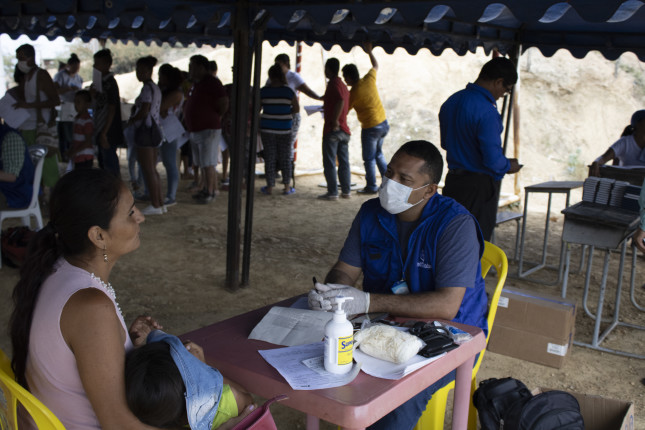-
The COVID-19 Pandemic and Vulnerable Populations: A Wilson Center NOW Interview with James Hollifield
May 8, 2020 By Eliana Guterman
Refugees and migrants are the most vulnerable and will bear the brunt of the Covid-19 pandemic, said James Hollifield, a Wilson Center Global Fellow, in a recent episode of Wilson NOW. These populations are often already at higher risk due to insufficient water and food supplies, and those confined in large camps are at greater risk of spreading the disease. According to Hollifield, although we have not yet seen the full extent of the damage, “we can see with both refugees and migrants in particular, especially seasonal migrants, that there’s a great danger here of the virus spreading like wildfire in the camps and in the dormitories.”
There are over 70 million forcibly displaced people in the world, according the UNHCR’s estimates. Those that qualify under the legal category of refugees account for about 25 million, with many living in camps that lack access to proper sanitation and healthcare facilities. Without the luxury of social distancing, said Hollifield, the confined quarters create difficult conditions for reducing the spread of Covid-19. People in the camps are also completely reliant on international organizations and governments to receive aid. “So as the virus spreads in these camps, the big question you know is who’s going to be responsible for taking care of these people and for getting them medical treatment.” To illustrate the severity of the risks, Hollifield spoke of the estimated 4 million Venezuelans living in camps and struggling to survive. If the economy is shutting down, the population does not have basic support networks or any source of income to feed themselves. This may force migrants to return to the violent, unstable conditions they originally fled from.
Despite the issues refugees and migrants face in the camps, they are at the very least getting some kind of official assistance. The approximately 41 million internally displaced persons (IDPs) worldwide are most at risk, said Hollifield. IDPs in the Middle East and sub-Saharan Africa regions are facing mass famines, on top of extreme susceptibility to the spread of disease and a lack of adequate healthcare.
Although the plight of migrants and refugees didn’t just start with Covid-19, it has certainly exacerbated it, said Hollifield. This is why the continued support and funding of the “international fire brigade” of agencies and NGOs on the frontlines is so essential. International organizations like the UN Refugee Agency and the World Health Organization are using their resources to take care of these vulnerable populations. If wealthier donor countries do not maintain their support, said Hollifield, these agencies are going to lose their ability to respond to the crisis. With increased potential for disease transmission and the majority of countries closing their borders during the Covid-19 crisis, the refugee and migrant hot spots need to be addressed. The root causes also need to be heavily considered. If states lose control during compounding crises, the further destabilization and greater movements of people could overwhelm relief organizations’ ability to respond.
Sources: United Nations High Commissioner for Refugees, World Health Organization.
Photo credit: MedGlobal Colombia Medical Brigade March 2020, MedGlobal
 A Publication of the Stimson Center.
A Publication of the Stimson Center.



